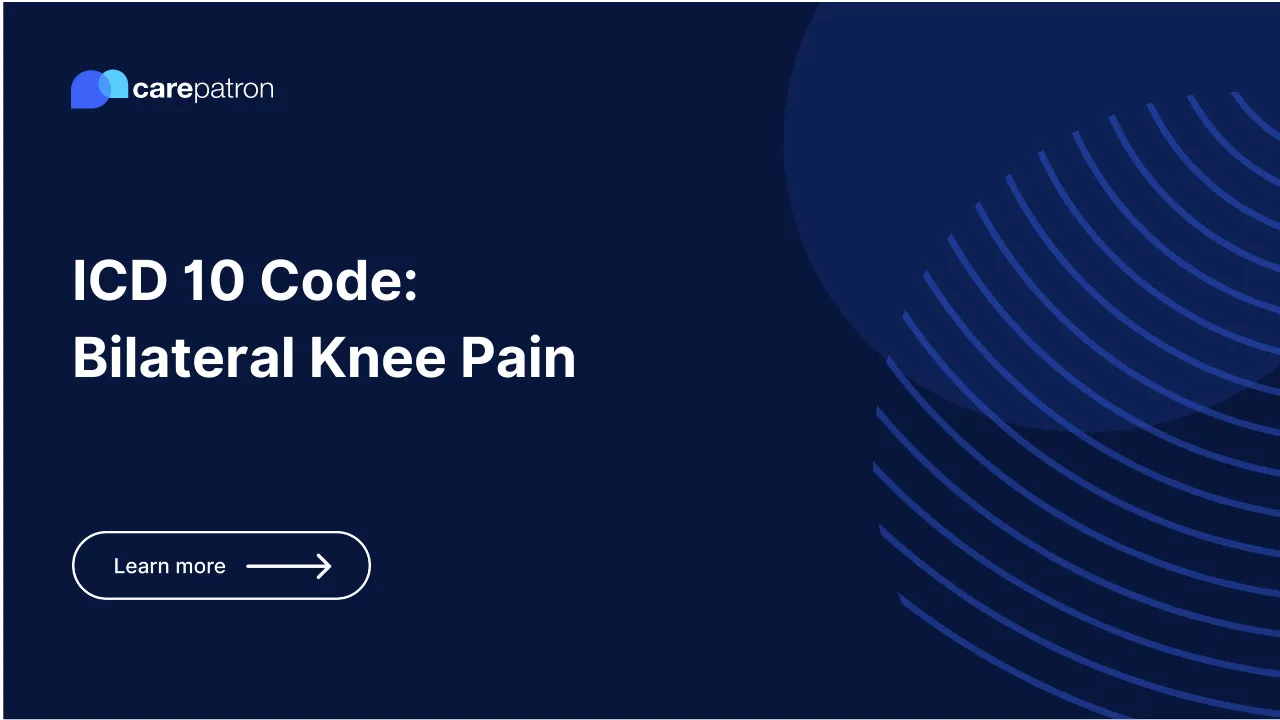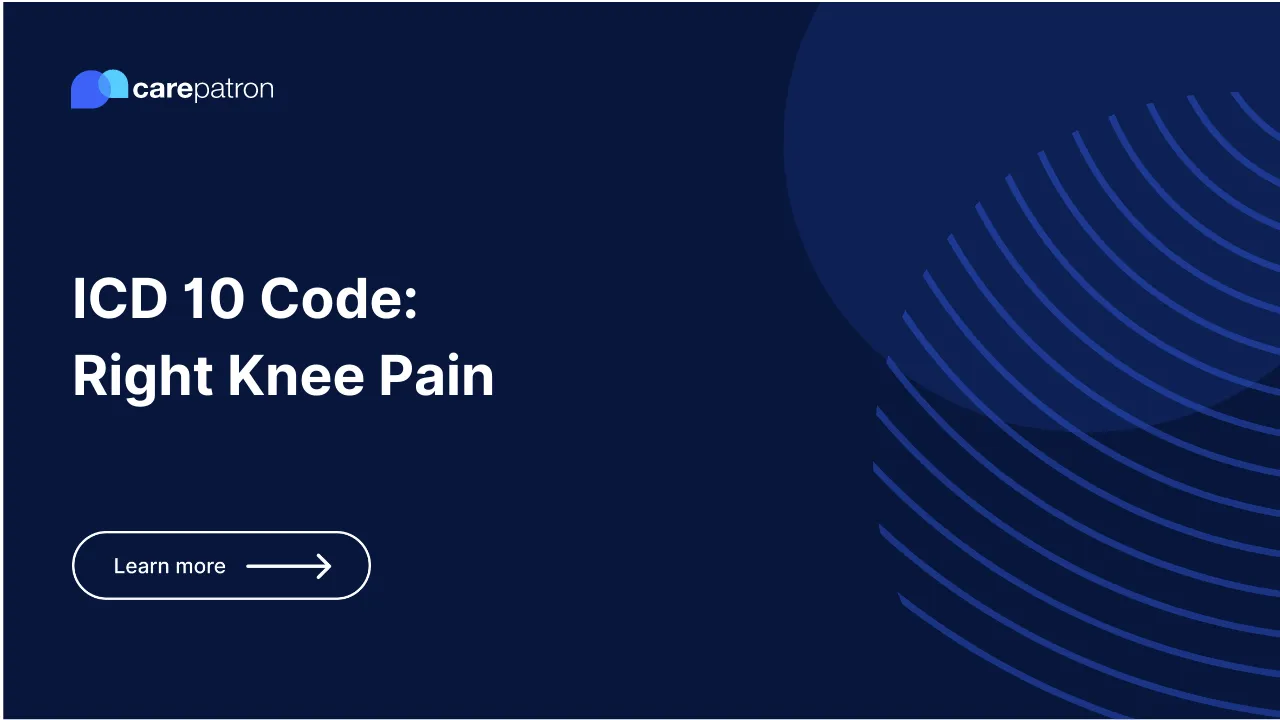Gouty Arthropathy ICD-10-CM Codes | 2023
Read this short guide to learn about Gouty Arthropathy ICD codes you can use!

What Gouty Arthropathy ICD-10 codes can I use?
If you’re looking for Gouty Arthropathy ICD codes, please note there are no ICD-10 codes that mention Gouty Arthropathy in their names. That doesn’t mean there aren’t any, though! They just go by the more common name for the problem: gout.
Here are some examples of ICD-10 codes for Gouty Arthropathy you can use:
- M10.9 - Gout, unspecified
This ICD-10 code is meant to be used on a patient confirmed to have gouty arthropathy. This comes with an unspecified label. This means the specific type of gouty arthropathy hasn’t been confirmed/identified yet.
- M10.10 - Lead-induced gout, unspecified site
This ICD-10 code is meant to be used on a patient confirmed to have gouty arthropathy that emerged due to lead toxicity.
- M10.20 - Drug-induced gout, unspecified site
This ICD-10 code is meant to be used on a patient confirmed to have gouty arthropathy that emerged due to using certain drugs.
- M10.30 - Gout due to renal impairment, unspecified site
This ICD-10 code is meant to be used on a patient confirmed to have gouty arthropathy that emerged due to problems or impairment of the kidneys (renal impairment).
- M10.40 - Other secondary gout, unspecified site
This ICD-10 code is meant to be used on a patient confirmed to have secondary gouty arthropathy (a type of gout caused by medications for or conditions related to hyperuricemia).
- M10.00 - Idiopathic gout, unspecified site
This ICD-10 code is meant to be used on a patient confirmed to have idiopathic gouty arthropathy. This means the reasons for the patient’s hyperuricemia and emergence of gouty arthropathy aren’t known.
Please note that Items 2 to 6 have unspecified labels. What is unspecified are the locations of the gouty arthropathy. Once you’ve identified the specific location of your patient’s gout, you must use a more specific ICD-10 code (e.g., M10.051 - Idiopathic gout, right hip).
Are these Gouty Arthropathy ICD-10 codes billable?
Yes. All of these ICD-10 codes for Gouty Arthropathy are valid and billable.
Clinical information about Gouty Arthropathy:
Gouty Arthropathy, more commonly referred to as gout, is arthritis characterized by inflammations that emerge due to uric acid crystals accumulating in the joints.
Uric acid crystals in the joints cause swelling that causes pain and discomfort. These crystals form if the body produces too much uric acid. Another reason for their formation could be the kidney not performing well enough to expel uric acid from the bloodstream.
There are two kinds of Gouty Arthropathy.
Primary Gouty Arthropathy is what we described earlier about uric acid crystals forming. Secondary Gouty Arthropathy is uncommon and emerges because of conditions that lead to hyperuricemia and taking certain drugs. Both these kinds have subtypes, some of which you’ve seen in the list earlier.
Synonyms include:
- Gouty arthropathy
- Gouty arthritis of left foot
- Gouty arthritis of left great toe
- Gouty arthritis of toe
- Primary gout
- Gout secondary to lead
- Acute gout
- Acute drug-induced gout
- Gouty arthropathy ICD 10
- ICD 10 code for gouty arthropathy
- ICD 10 gouty arthropathy
- ICD 10 gouty arthropathy foot
- ICD 10 code for chronic gouty arthropathy

Commonly asked questions
Healthcare professionals will do the following:
- Interview patients about their personal and family medical history
- Check if genetics have something to do with their condition
- Conduct physical examinations
- Conduct joint aspiration to check for uric acid crystals.
Gouty Arthropathy is treated using prescribed pain-relieving medication and uric acid level-lowering medication.
No. Once a person gets gout, the best they can do is manage it until it goes away, but they should expect it to recur. They can prevent it or at least lessen the severity by changing their diet, maintaining a healthy weight, and avoiding alcohol consumption.






.webp)
.webp)
.webp)
.webp)
.webp)
.webp)
.webp)
.webp)
.webp)
.webp)
.webp)
.webp)
.webp)
.webp)
.webp)
.webp)
.webp)
%2520(1).webp)
.webp)
.webp)
.webp)
.webp)
.webp)
.webp)
.webp)
.webp)
.webp)
.webp)
.webp)
.webp)
.webp)
.webp)
.webp)
%2520(1).webp)
.webp)
.webp)
.webp)
.webp)
.webp)
.webp)
.webp)
.webp)
.webp)
.webp)
.webp)
.webp)
.webp)
.webp)
.webp)
.webp)
.webp)
.webp)
.webp)
.webp)
.webp)
.webp)
.webp)
.webp)
.webp)
.webp)
.webp)
.webp)
.webp)
.webp)
.webp)
.webp)
.webp)
.webp)

.webp)
.webp)
.webp)
.webp)
.webp)













.webp)
.webp)




.webp)


